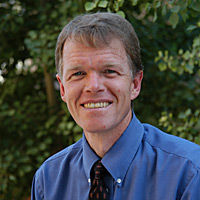“Let’s put some things into action. Let’s not keep planning or surveying.”
With those words, Moab City Council member Gregg Stucki summed up the consensus among a majority of city and county council members who attended a joint meeting last week between the two governing bodies.
Moab Mayor Dave Sakrison convened the meeting on Friday, July 31, with the hope that city and county officials would consider the possibility of collaborating on a long-range strategic plan that maps out the community’s future.
Sakrison said it would behoove the community to plan ahead as Moab grapples with everything from a housing crisis to outdated infrastructure – including the city’s wastewater treatment plant and the county’s aging jail – along with issues related to residents’ overall quality of life.
“I think we’ve all heard from some of our constituents that it’s not the same place,” he said.
The Sonoran Institute last completed a detailed study of Moab’s big-picture needs in 1995. Since that time, Sakrison said, Moab’s demographics have changed completely, and the world is a much different place today than it was 20 years ago.
“The world’s evolved, and how are we going to evolve with it?” Sakrison said. “I think that’s the question.”
Stucki said it isn’t really valid to make the assumption that community leaders are not looking into the future, noting that they have already invested loads of time and energy in the planning and visioning process.
In his mind, he said, the problem isn’t a lack of planning.
“It’s the diversity of opinions in the community,” he said.
Grand County Community Development Director Zacharia Levine said he doesn’t believe that any of the previous plans addressed the dramatic population growth along the Wasatch Front, as well as the greater Denver area and Colorado’s Western Slope.
As those areas continue to grow, he said, tourism and visitation to Moab will increase even more exponentially.
Grand County Council member Lynn Jackson said he thinks the community is dealing with many of the same challenges that it faced in 1995, adding that they may have grown a “little more” acute over the years.
Like Stucki, however, Jackson questioned the need for another detailed long-range planning process, noting that his constituents think the time has come for the community’s governing councils to “do stuff.”
“I’d just rather see us focus our time on resolving the issues directly in front of us,” he said.
In the future, Jackson said, there should be an expectation that the various task forces in the community will report to the two main governing bodies on a regular basis – starting with the affordable housing task force.
Efforts to address Moab’s affordable housing and workforce housing needs are ultimately at the core of everything that the two entities are trying to address, he said.
“Until we solve that, all of this other stuff is for naught,” he added.
Grand County Council vice chair Chris Baird said he sees the value in reviewing the plans that are currently out there.
Elected officials already know that previously identified problems need to be fixed, he said, yet they haven’t been.
“There are lots of different things that I think we could skip down to tomorrow,” he said.
In terms of more concrete ideas, Baird suggested that local officials should work with state lawmakers to give the community more leeway in how it spends its Transient Room Tax revenue.
Right now, he said, nearly all of that money is devoted to tourism-promotion efforts, and Baird said he would like to see more of that funding go toward economic development in the community.
Grand County Council chair Elizabeth Tubbs said that council members hear from the same 300 to 400 people on all ends of the political spectrum when hot-button issues come up. But they’re in the dark, she said, in terms of most residents’ wishlists to address specific problems.
“What we don’t know is how the community wants to resolve them,” Tubbs said.
Grand County Council member Mary Mullen McGann said she would like to know where average residents stand on particular issues, calling the 1995 study’s survey range of 188 people a “pretty small” demographic.
For his part, Stucki said that community-wide surveys are not a good way to gauge how a majority of residents feel about a particular issue.
“Surveys are overrated because of the lack of participation,” he said. “It’s tough. Unless you go door to door and make them take the survey, you’re never going to get more than a few percentages.”
Officials see need for action on previously identified issues




